Categories: Featured Articles » Novice electricians
Number of views: 3081
Comments on the article: 0
The use of the Wheatstone bridge for measuring non-electric quantities
Wheatstone Bridge is an electrical circuit designed to measure the magnitude of electrical resistance. This scheme was first proposed by British physicist Samuel Christie in 1833, and in 1843 it was improved by inventor Charles Wheatstone. The principle of operation of this scheme is similar to the action of mechanical pharmacy scales, but it is not the forces that are equalized here, but the electric potentials.
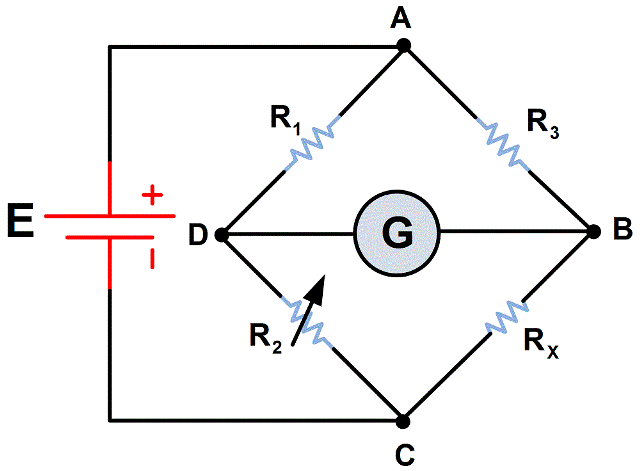
The Wheatstone bridge circuit contains two branches, the potentials of the middle terminals (D and B) of which are equalized during the measurement process. One of the branches of the bridge includes a resistor Rx, the resistance value of which must be determined.
The opposite branch contains a rheostat R2 - adjustable resistance. Between the middle conclusions of the branches, the G indicator is on, which can be a galvanometer, a voltmeter, a zero indicator or an ammeter.
During the measurement process, the resistance of the rheostat is gradually changed until the indicator shows zero. This means that the potentials of the midpoints of the bridge between which it is connected are equal to each other, and the potential difference between them is zero.
When the arrow of the indicator (galvanometer) is deviated in one direction or another from zero, this means that a current flows through it, and therefore the bridge is not yet in balance. If the indicator is exactly zero, the bridge is balanced.


Obviously, if the ratio of the upper and lower resistances in the left shoulder of the bridge is equal to the ratio of the resistances of the right shoulder of the bridge, the balance (or equilibrium) of the bridge occurs simply because of the zero potential difference between the terminals of the galvanometer.
And if the values of the three bridge resistances (including the current resistance of the rheostat) are first measured with a sufficiently small error, then the desired resistance Rx will be found with sufficiently high accuracy. It is believed that the resistance of the galvanometer can be neglected.

The Wheatstone bridge is essentially universal, and is applicable not only for measuring the resistances of resistors, but also to find a variety of non-electric parameters, it is enough that the non-electric magnitude sensor itself is resistive.
Then the resistance of the sensor element, changing under a non-electric effect on it, can be measured using the Wheatstone bridge circuit, and the corresponding non-electric quantity can thus be found with a small error.
Thus, one can find the value of the value: mechanical deformation (strain gauges), temperature, illumination, thermal conductivity, heat capacity, humidity, and even the composition of the substance.
Wheatstone bridge-based measuring instruments typically take readings from a bridgevia analog-to-digital converterconnected to a digital computing device, such as a microcontroller with a built-in program that performs linearization (replacing non-linear data with approximate linear ones), scaling and converting the received data into a numerical value of the measured non-electric quantity in appropriate units, as well as error correction and output in a readable digital form.
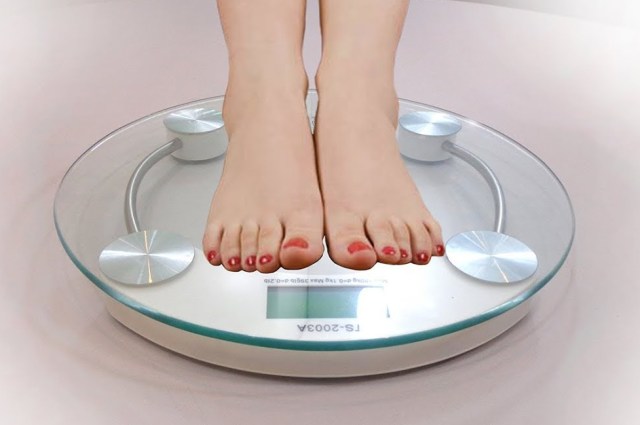
For example, floor scales roughly work on this principle. In addition, harmonic analysis can be carried out right away using software methods, etc.
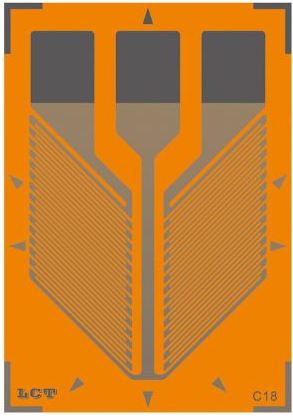
The so-called strain gauges (resistive sensors of mechanical stress) are used in electronic scales, in dynamometers, manometers, torsiometers and tensometers.
The strain gauge is simply glued onto the deformable part, is included in the shoulder of the bridge, while the voltage in the diagonal of the bridge will be proportional to the mechanical stress that the sensor responds to - its resistance changes.
With the imbalance of the bridge, measure the magnitude of this imbalance, and thus find, for example, the weight of a body. The sensor, by the way, can also be piezoelectric if fast or dynamic deformation is measured.
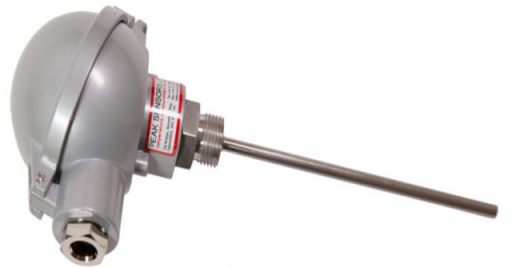
When it is necessary to measure the temperature, resistive sensors are used, the resistance of which varies with the temperature of the body or medium under study. The sensor may not even come in contact with the body, but rather perceive thermal radiation, as occurs in bolometric pyrometers.
The principle of operation of a bolometric pyrometer is based on a change in the electrical resistance of a thermosensitive element due to its heating under the influence of an absorbed flow of electromagnetic energy. A thin plate of platinum, blackened for better absorption of radiation, quickly heats up due to its small thickness under the influence of radiation and its resistance increases.
Similarly, resistance thermometers with a positive temperature coefficient and thermistors with a negative temperature coefficient based on semiconductors operate.
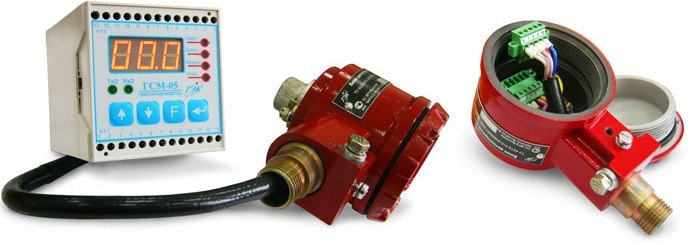
When the temperature is changed indirectly, it is possible to measure thermal conductivity, heat capacity, flow rate of a liquid or gas, concentration of components of a gas mixture, etc. Indirect measurements of this kind are used in gas chromatography and in thermocatalytic sensors.
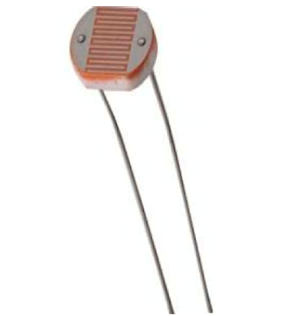
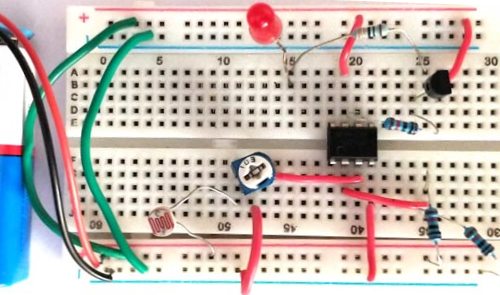
Photoresistors change their resistance under the influence of illumination, and specialized resistive sensors are used to measure the flow of ionizing radiation.
How to use photoresistors, photodiodes and phototransistors
Analog sensors: application, methods of connection to the controller
Connecting analog sensors to Arduino, reading sensors
Measuring temperature and humidity on Arduino - a selection of methods
How are devices for measuring resistance arranged and working
See also at i.electricianexp.com
:
